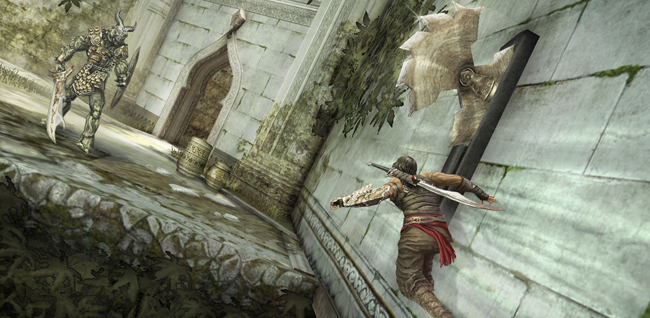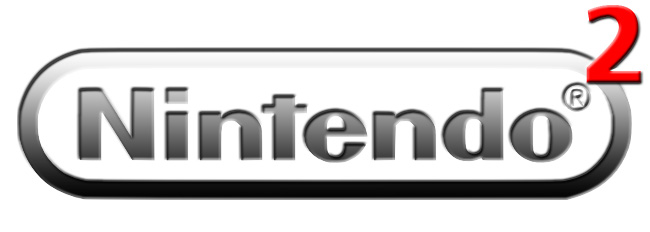Are there a new Wii and DS in the works from Nintendo? In all probability, the answer is “Yes.” Typical business and product-development cycles dictate that work begins on a new iteration once the current version “breaks even”. After this point, the current product is generating pure profit and a successor is prepared for the next sales cycle. This is why companies like Apple create new versions of their iPods every year, why Microsoft began developing Natal as a possible pseudo-successor to the current XBox 360, and why Nintendo itself created the DS Lite and DSi.
It should come as no surprise, then, that Nintendo has more than likely been developing an update to its current consoles as long ago as early 2008 in preparation for an announcement at this year’s E3 Expo.
Nintendo has on several occasions noted that there is no successor to the Wii and DS to announce. This, as we can deduce, is mostly to stave off a potential decline of sales as buyers wait for the new product. However the NPD has stated that sales of the current Wii is on the decline, with year-over-year numbers depicted as only a shadow of their 2007/2008 records – barring the enormous price-drop induced 2009 holiday season, of course. January 2010’s sales have shown a drop from the previous year, and all estimates point to a continued decline as consumers anticipate the launch of Microsoft’s Natal and the enticement of Sony’s PS3 price-drop and the growth of Blu Ray and Hi-Def in US consumer homes. Not to mention the continued growth of the iPhone as a portable platform powerhouse.
This may be the “kick in the product-launch butt” that Nintendo needs to push ahead the announcement of the DS and Wii successors, and there are several bits of information that allude to this occurring as soon as this year’s E3 Expo.
The Nintendo DS2

Nintendo’s DS product family continues to sell at high level. Since its launch in 2004 it has technically been the same, barring the addition of the cameras and aesthetic tweaks. The DSi, the latest iteration, has even spawned a larger “XL” version that soon to be released in the US.
So why create a successor? With increased competition from the more technically advanced iPod and iPhone and the PSP still in the mix, the DS has seen a flattening of its sales growth. Note: It is still selling incredibly well at a high rate, but that rate has not changed in the past two years. This is usually the first sign of a coming downward trend. Also to note is the slow and apparent death of core gaming on both of Nintendo’s hardware platforms. On the DS, the low-res graphics do nothing to bring fidelity to the visuals, something that not only adult gamers but also children (the prime DS buyers) are becoming more aware of as home entertainment moves to Hi-Def.
In the past few weeks, more and more clues have appeared that point to an upcoming revamp of the hardware.
As was rumored back in October, Nintendo may have contacted Nvidia to work on a DS-specific Tegra chipset. This chip powers the Zune HD, which translates to better visuals — something the DS sorely needs.
According to recent news from CVG the development kits for the next DS have already been released to a few high-profile Japanese developers, the first of which may have been The Pokemon Company. The dev kits apparently include actual hardware that one developer stated as being “genuinely the best thing [he thinks he’s] ever worked with” and that “it’s got a ’tilt’ function that’s not dissimilar to iPhone, but does a lot more.” The developer also noted the hardware’s time frame didn’t seem to fit a March announcement (when the annual Game Developer’s Conference will be taking place).
Even Nintendo’s President, Satoru Iwata, let “slip” that the next DS will have improved visuals and motion detection, although those comments were later noted as being “misinterpreted”.
A final point of interest would be to note the dearth of scheduled “big games” for the DS in 2010. In fact, the upcoming Pokemon Heart Gold/Soul Silver and Dragon Quest IX games may be the highest-profile releases, and all three have already enjoyed release in Japan in 2009.
The Nintendo Wii Plus

The Nintendo Wii has been under scrutiny for some time now. When motion controls were initially ridiculed by the core gaming group the Wii’s success was treated as a fad. Now more than 3 years later the Wii’s sales continue to set records, expanding the gaming market and serving as the reason that both Microsoft and Sony have spent considerable time creating their own motion-control apparatuses. Still considered a fad, the Wii is on a path to become the highest-selling home console of all time.
But sales have slowed. From 2008 to 2009, during the “Great Recession”, the Wii saw its sales drop by about 500k units year-on-year. In comparison, the XBox 360 saw flat sales and the PS3 saw about 1 million units in growth. This is amid price cuts and the release of several high-profile Wii games in 2009 including New Super Mario Bros Wii, Wii Sports Resort, and WiiFit Plus. The outlook for 2010 has analysts predicting a further slide in sales and revenue.
Back in 2009, we asked our readers what they would like to see from a successor to the Nintendo Wii. The #1 response: Hi-Def visuals. Nintendo has often stated that it would move to HD when the time was right. Apparently, the time may be right now.
In November 2009, during a conference call to investors, Iwata divulged that Nintendo may be open to an SD/HD console hybrid.
If we can find out the most appropriate medium, between SD and HD, and flexibly move around them depending on the game’s contents, it will be good, I think… Won’t HD be better for the games like Pikmin? The developers should choose the most appropriate graphical format depending on the software they make.
This may infer that Nintendo may be allowing publishers to create HD content for games like the upcoming new Legend of Zelda, yet still allow SD visuals for those games that require less, like the plethora of fitness games on the system. Or, it may also lead to the notion that Nintendo may be working on an update that would allow specific Hi-Def Wii games to still be playable on the current standard definition Wii. For example, placing the next Metroid game in an HD Wii will showcase visuals in 720p or 1080p, but will “down-res” the visuals when played in a current Wii. While this may not be the optimal way to handle visuals on an HD system – lighting, textures, etc play a huge part – this would allow for a “bridge” console between the current and eventual actual successor to the Wii, something Nintendo says needs to be more than just HD content.
Last year, sources also claimed that Nintendo had been spending considerable amounts of R&D, looking to incorporate high definition into the successor to the console by 2011.

As recently as this past week Ubisoft showed the first screens from the next Prince of Persia game for the Wii, with surprisingly crisp visuals that left most viewers wondering what Photoshop trickery had taken place. One method potentially offered up to create the visuals, which seem to rival high end original XBox or low-end XBox 360 games, is to start in 720p and downgrade to standard def. Could this be the first game to utilize the Wii’s new up-res console? PoP is due in May.
Earlier this year High Voltage Software, makers of the Wii-exclusive The Conduit, removed the game’s spiritual successor The Grinder from Wii-exclusivity, planning to release on both the XBox 360 and PS3 as well as the little white console. Since The Conduit’s sales were less than stellar, creating the next game for the more core-oriented HD consoles is a natural fit. But why continue to work on a Wii version? Perhaps the reason could lie in the SD/HD Wii console question. Creating a Wii version of the game may be much easier and less of a risk if it was developed in 720p (or 1080p) alongside the 360 and PS3.
Finally, this year sees the release of three extremely high-profile Wii games: the new Legend of Zelda, Super Mario Galaxy, and Metroid: The Other M. While these alone may be enough to give the current SD Wii a solid 2010 gaming year and momentary sales jolt, the sequels alone may not be enough to carry Nintendo into 2011 on a sturdy sales pace. The intended market for these games, the core, demands more than just sequels to purchase console. Providing a “Wii 1.5” (or Wii Plus) with enhanced visuals for these games may help bring back some of the core that has abandoned the console. Essentially, Nintendo would be able to sell the same game for both the Wii Plus and the standard Wii, much like they did with the Wii and Gamecube versions of Zelda: Twilight Princess.
An E3 reveal for the Wii Plus (or WiiHD) and the DS2 may be forthcoming. Nintendo may utilize the event to remain relevant with an ever-increasing assault by Sony and Microsoft on their motion-control territory. With E3 just a few short months away, we’ll know for sure.
Sources:
Joystiq
Kotaku
NPD
Gizmodo
Computer And Video Games
What They Play



3 Comments